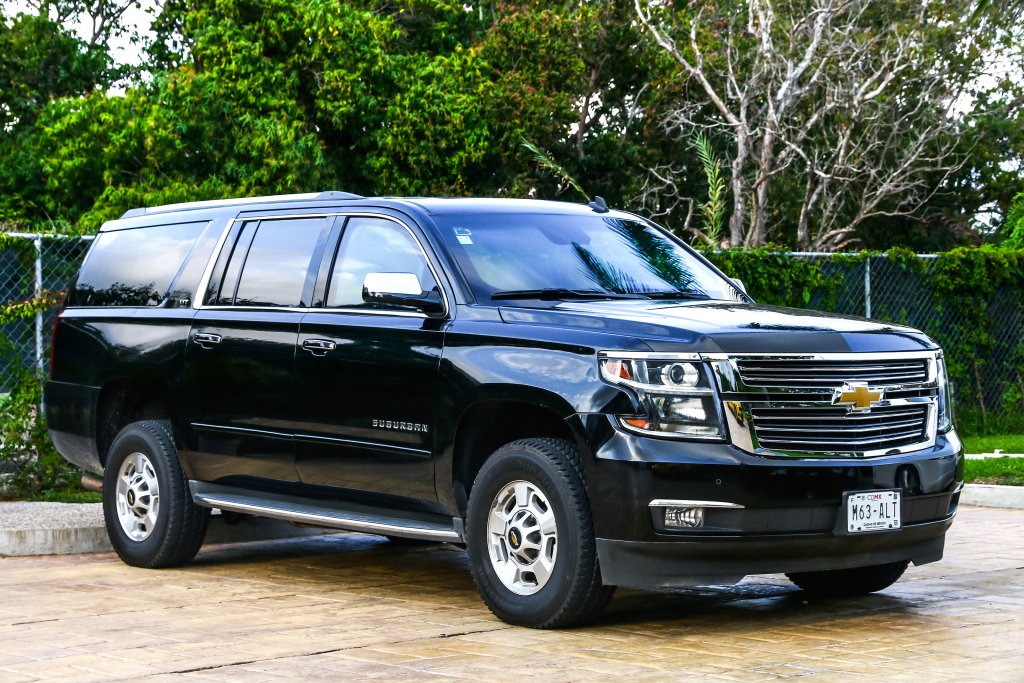The Chevrolet Suburban is built by GM and has been in production since 1935. This Chevy SUV is in its 12th generation and boasts of being the longest-used nameplate in the automotive world. Since 2001, more than 1.5 million Suburbans have been sold in the United States, with the 2001 to 2004 models being the most popular.
To determine which Suburban models are the best and worst, we examined the data very closely.
Before you purchase a Chevy Suburban, it’s helpful to consider this information, ensuring you get a reliable SUV for the best price. If you already own a Suburban, this information should help you determine if it’s worth putting any more money into.
We source this data from thousands of FIXD car scanners installed in Chevrolet Suburban models. All of the information we gather is combined with survey results from real Suburban owners. These statistics are used in conjunction with reports about fuel economy, KBB values, recalls, and safety ratings to ensure you can see the big picture.
| Best Years | Why? | Worst Years | Why? |
| 2019 | High-reliability ratings, lower cost of ownership | 2013 | Higher chance of mechanical problems, cost of ownership exceeds average |
| 2005 | Superior ownership scores, reduced repair and maintenance expenses | 2007-2010 | Average reliability scores, high cost of ownership, trouble with engine or transmission |
| 2011-2012 | Elevated scores from owners, reasonable cost of ownership | 2003-2004 | Lower reliability ratings, high chance of engine or transmission trouble |
| 2014-2017 | Loved by owners, small risk of major mechanical problems | 2001-2002 | Reduced reliability rating, lower resale value |
If you’d like to see an in depth comparison of this vehicles competitors, check out:
Chevrolet Suburban Vs Chevrolet Tahoe
Chevrolet Suburban Engine Reliability Score, Safety Ratings, MPG, and Value v.s. Maintenance & Repair Costs – Year by Year
We want to help you shop for a Chevrolet Suburban by laying out all of the information we’ve sourced about the SUV. Combine the data from our four comprehensive charts to figure out which models would be worth looking at closer. You can learn about the reliability of this Chevy SUV, along with fuel economy ratings, the average maintenance cost, resale values, and safety scores.
If you’re in the market for a car, take a look at our article on the USA’s most reliable and cheapest to repair cars in the U.S. Don’t get stuck with a lemon, use our data to help you shop.
Engine Reliability Score – Over The Years
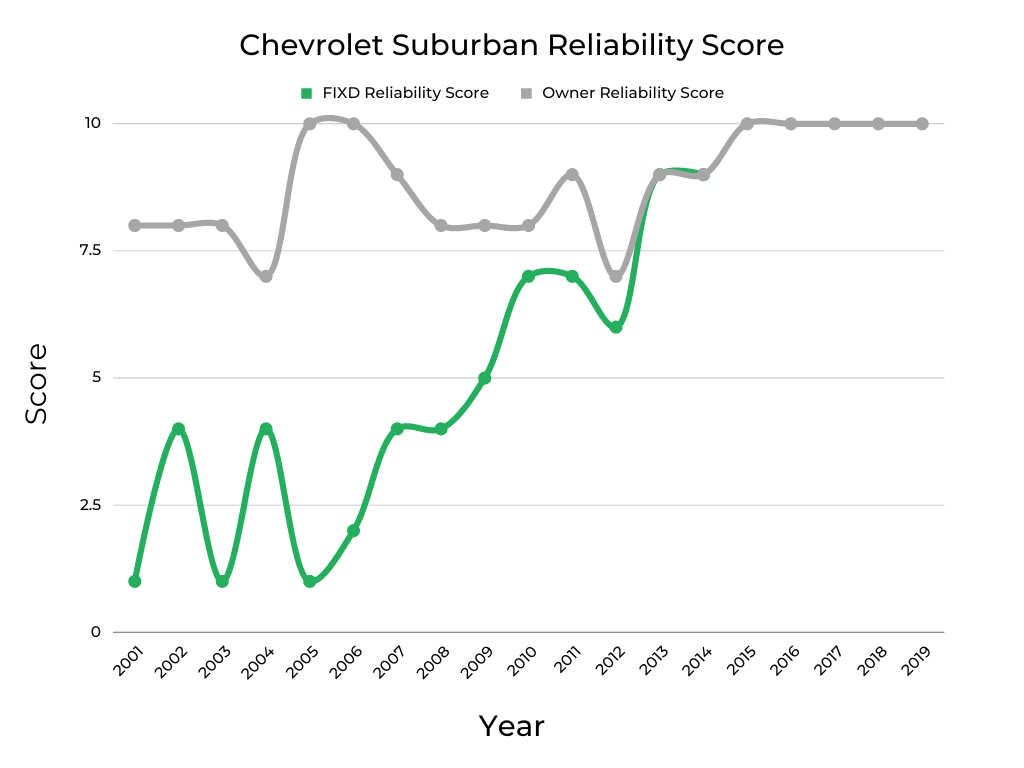
This chart reveals average reliability ratings of Chevrolet Suburban SUVs based on two different factors:
- The FIXD Reliability score (Green line) – this information is sourced from the number of check engine lights set by Chevy Suburbans during every 12,000 miles of driving (1 year’s worth of driving).
- The Owner Reliability score (Gray line) – answers from Chevrolet Suburban owners who took our survey.
We rank everything on a 1 to 10 scale. If the Chevrolet Suburban is rated the highest, it will have a 10. The lowest score is 1. Therefore, an average between the two would be 5.
There are plenty of significant takeaways from this graph. Most importantly, the FIXD Reliability Rating only goes through the 2014 model. We didn’t have enough data after that to make accurate predictions, so we chose to leave these out. However, we can assume that the newer models would follow the same trajectory as the owner ratings.
Looking at this chart by itself, you can learn a lot about Suburban models. However, this graph isn’t meant to be used on its own. It’s important to pair this data with other information below. If you are shopping for a Suburban, look at this chart to get rid of models that haven’t ranked high. If you already know what model you want to look at closer, jump ahead to the detailed information.
You may also consider reading about the most common reasons for the Check Engine Light on Chevy models before making your decision.
NHTSA Safety Score – Over The Years
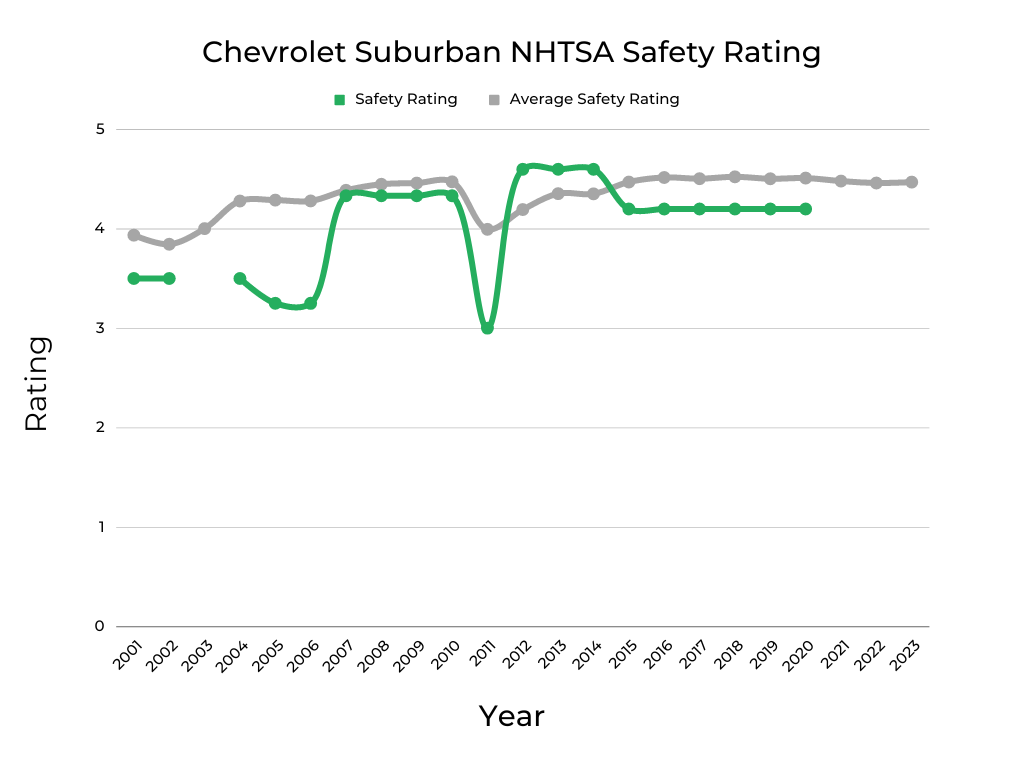
The National Highway Transportation Safety Administration (NHTSA) handles all crash testing of vehicles to provide a safety score. We take this information and put it into a chart, so you can quickly see the rankings.
Look at the green line to learn about the average safety rating of every Chevy Suburban model. This information pairs with the gray line to show you how it relates to the average crash test safety rating on all passenger vehicles that we have the NHTSA data on.
What’s disappointing about this information is that the 2012 to 2014 Chevy Suburban models are the only ones that have scored about average.
To score cheap car insurance for your used SUV, you want a model with high safety scores.
If you live in one of the states listed below, we can show you the cheapest vehicles to insure in yours.
| What Used Cars Are the Cheapest To Insure In: |
| Ohio |
| North Carolina |
| Michigan |
| Georgia |
| Texas |
| New York |
| Illinois |
| Pennsylvania |
| California |
MPG – Over The Years
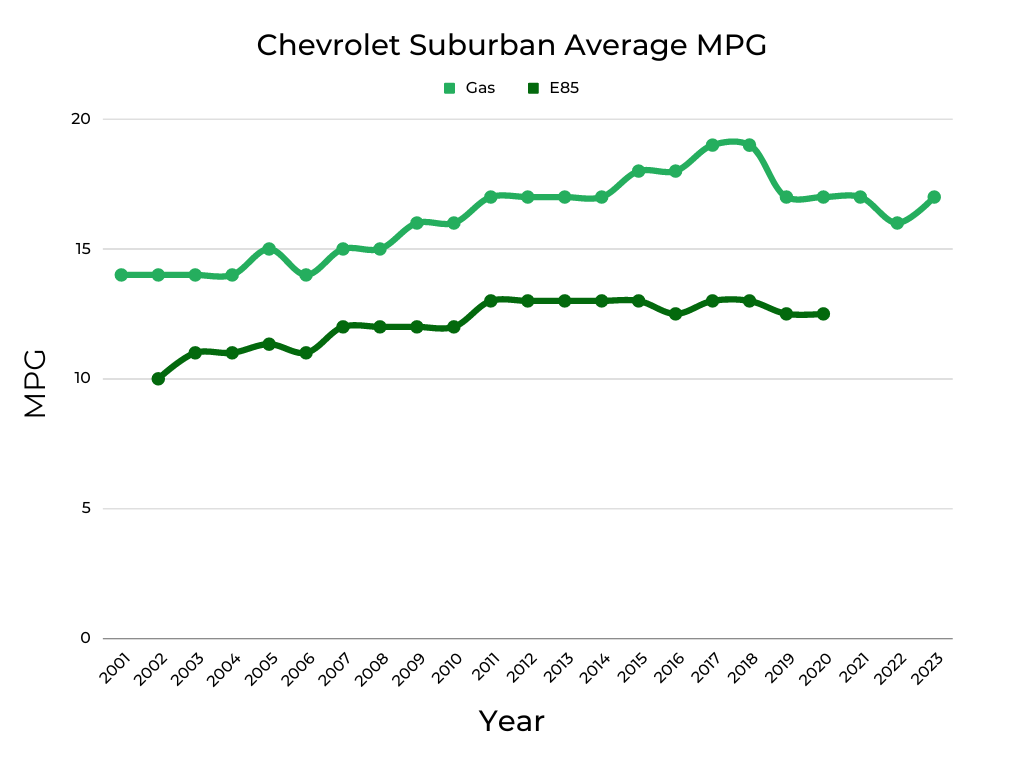
Chevy Suburban models aren’t small. These aren’t compact SUVs. Therefore, you know that you are going to spend some money on fuel, no matter which model you drive. Yet, it’s still important to find the models that are most fuel-efficient.
Our graph illustrates the average Chevrolet Suburban fuel economy by model year. The lighter green line reveals the average ratings for the SUV with a gas powertrain. The Suburban has also been offered with an E85 configuration. These ratings are revealed with the darker green line.
While you won’t save a ton of money, the 2017 and 2018 models get the best fuel economy overall. Every penny counts when you are filling up the tank.
Current Market Value of All Chevrolet Suburban Years & Cost Per Year to Repair and Maintain Each
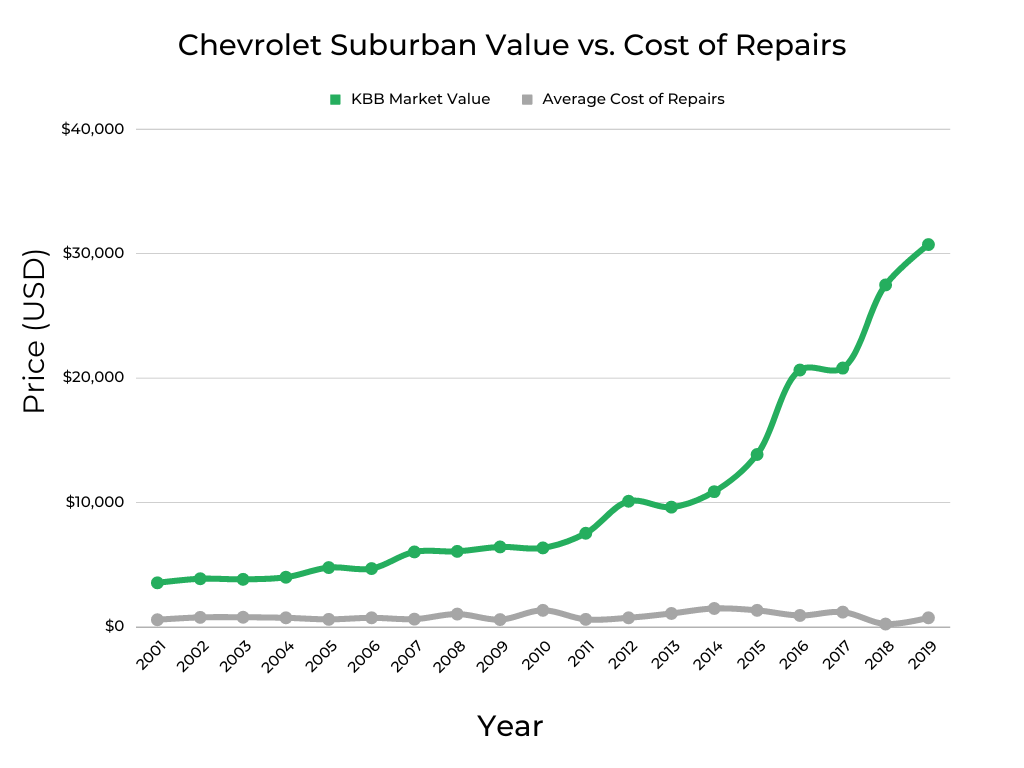
By evaluating information from Suburban owners, it’s simple to average the cost to maintain and repair each model year. There’s also a direct relation between the reliability of most models and how much it costs to repair them. For every time you need to take your SUV to the shop, it’s important to evaluate how long you will be without transportation too.
If you have a Suburban that you want to sell, it’s important to know the approximate resale value. If your model year has minimal mechanical issues, you should be able to get more for the sale. Newer Suburban models are going to get the highest sale price, on average. However, you must look closer at the data to see what’s accurate for your vehicle.
Before buying a Chevrolet Suburban, narrow down the model years that appeal to you the most. If you are torn between two models, you may want to go with the newer one because of the higher resale value. As long as the reliability ratings are high, you should be able to get more life out of it.
Our graph shows the model years in conjunction with the average value. This information is determined by the mileage reported by survey respondents. Therefore, you could see a different value on the actual model you are looking at. Run your own resale reports with KBB before selling or buying a Suburban.
When shopping for a used Chevrolet Suburban, it’s important to keep in mind that not all vehicles are cared for equally. To protect yourself from lemons, take along a FIXD Sensor on your test drive. FIXD connects to a free app on your smartphone to tell you more about the vehicle you’re checking out, including check engine lights and other hidden issues that the owner or dealership may be attempting to hide. Click here to learn more and get FIXD for only $19.99 (regular price $59)!
Important Features Timeline

1996: Engines produce more horsepower and torque, 4WD model earns an optional electronic shift transfer case
1997: Newly released dual airbags, cargo area receives power lock switch
1998: Theft-deterrent system becomes standard, heated seats are optional
1999: New colors released, final model of 8th generation
2000: Redesigned for 9th generation
2001: Vortec 6000 motor receives horsepower increase to 320, new 8.1L engine produces 340 horsepower, oil change interval changed from 7,500 miles to 10,000 miles
2002: Base trim level dropped from the lineup, LS receives standard six-way power driver and front passenger seats, exterior side steps, and heated outside mirrors, 5300 V8 engine burns gasoline and ethanol mixed fuels
2003: Quadrasteer four-wheel steering becomes available on ¾-ton models, ½-ton models include the StabiliTrak stability control system
2004: ½-ton models receive standard Hydroboost brakes, upgraded 16” and 17” wheels, and tire-pressure monitoring, 2WD models have a locking rear differential and a trailering package
2005: Touchscreen navigation system available, rear barn doors discontinued and replaced with overhead rear liftgate, Z71 off-road package available with 2WD models
2006: Quadrasteer dropped from the lineup, OnStar added, steering wheel-mounted audio controls provided as standard equipment
2007: Completely redesigned for 10th generation
2008: Side curtain airbags become standard with all models, OnStar turn-by-turn navigation is standard with LT and LTZ trims
2009: New six-speed automatic transmission on 1500 models, all trims receive 50/50-split third-row bench and Bluetooth connectivity, two optional rearview cameras added to the lineup
2010: 2LT trim dropped from the lineup, new audio systems added with a standard USB port
2011: LS trim receives standard Bluetooth and rear seat controls, optional towing package comes with trailer brake controller, 20” chrome wheels available
2012: Optional navigation and rear-seat entertainment system updated
2013: Transmission includes new braking mode to reduce brake wear on downhill inclines
2014: 2500 series and larger V8 dropped from the lineup, LS trim receives standard rear parking sensors, remote ignition, auto-dimming rearview mirror, power-adjustable pedals, and a rearview camera
2015: Redesigned for 11th generation
2016: 8” touchscreen and Apple CarPlay integration becomes standard equipment, optional Driver Alert package includes automatic headlights and lane-departure
2017: Top trim level renamed Premier, new standard features include low-speed emergency braking, teen-driver location management system, and rear-seat alert
2018: No significant changes
2019: Newly available RST Performance Edition package with 6.2L V8
2020: New 6.2L Performance package comes with a 6.2L V8 plus extra technology features
2021: Redesigned for 12th generation
2022: Available 10.2” screen increases to 12.2”, previously optional driver aids become standard
The Best Years of the Chevrolet Suburban
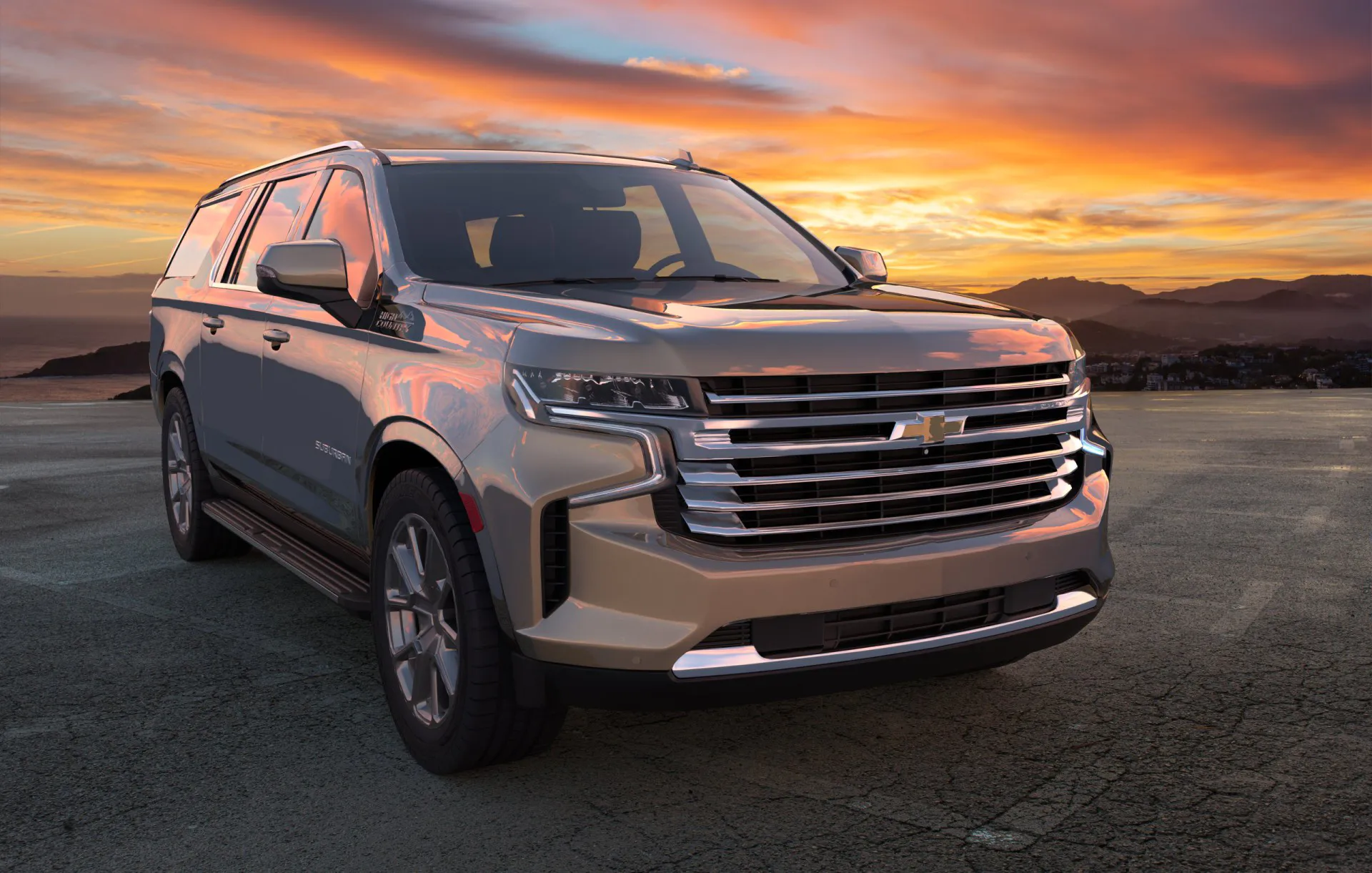
To ensure you find the best SUV, we looked closely at the FIXD Reliability score in conjunction with the other information we collected. These ratings combine with the Owner Reliability score, fuel economy numbers, safety testing results, and other factors. Furthermore, we dive deep into the top diagnostic trouble codes (DTCs) for each year and look at the recalls from the National Highway Traffic Safety Administration (NHTSA), giving you a clearer picture.
For our rankings, we’ve excluded the 2006 and 2018 Chevrolet Suburban models. After only receiving one survey response for both of these model years, we felt that the data wouldn’t be accurate enough to share. However, it’s safe to assume that both of these models would probably rank near the other models years before or after them.
2019 Chevrolet Suburban
FIXD Reliability Score: N/A
Owner Reliability Score: 10/10
KBB Value: $30,731
Fuel Economy: 17 mpg (gas), 12.5 mpg (E85)
Annual Maintenance/Repair: $750
Safety Rating: 4.2/5
The newest of the models we are evaluating is also the best, based on the data. It receives a perfect Owner Reliability Score and doesn’t seem to cost an excessive amount to maintain.
The Owners Reliability score of the 2019 Chevy Suburban is a perfect 10 out of 10. You can’t ask for much more than owners to be happy with their vehicles.
Sadly, the NHTSA crash testing score for the 2019 Chevrolet Suburban is only 4.2 (out of 5). While this sounds like it would be good enough, it does fall below the average.
The ownership cost of the 2019 Chevrolet Suburban sits at $750 a year. While this may seem like a lot, it’s not for the Suburban lineup. As a larger SUV, these models naturally cost more to repair and maintain. What’s most important is the lack of major mechanical functions, aside from some potential engine issues. However, we only had four respondents for this model year, so a few more answers could have dramatically changed our data for the better.
The 2019 Suburban’s most common issue is the Random Misfire Detected (P0300) code. This issue may occur at the same time as the Cylinder 5 Misfire (P0305) code. This repair sometimes requires a new fuel injector, which may cost $301 to $463. There’s also the chance that the Fuel Pressure Regulator 1 Exceeded Control Limits – Pressure Too Low (P228C) DTC. This issue may lead to a high-pressure fuel pump replacement, averaging $909 to $1,351.
The 2019 Chevrolet Suburban shows two recalls on the NHTSA website.
2005 Chevrolet Suburban
FIXD Reliability Score: 1/10
Owner Reliability Score: 10/10
KBB Value: $4,785
Fuel Economy: 15 mpg (gas), 11.33 mpg (E85)
Annual Maintenance/Repair: $625
Safety Rating: 3.25/5
The 2005 Chevrolet Suburban is an older model with great ownership ratings. It also maintains a low cost of maintenance and repair.
The FIXD Reliability score on the 2005 Chevrolet Silverado is only 1 out of 10. Yet, the Owner Reliability Score hits a perfect 10 out of 10.
The NHTSA crash test score of this Suburban is only 3.25 (out of 5). This is below average as well.
What’s exciting about this model is the lower cost of ownership. For an older model, it’s nice to see an average of just $625 on this SUV. The only issue is a slightly elevated risk of transmission repairs.
The most common DTC is the Throttle/Pedal Position Sensor/ Switch A/B Voltage Correlation (P2135) code. To replace the throttle body, you may spend $321 to $460. There’s also an increased chance for both the System Gross Leak Evaporative System Malfunction (P0455) and Evaporative System (EVAP) Vent Circuit Control Malfunction (P0449) codes. These two codes could be related. The only problem with having a major issue to repair is that the lower resale value doesn’t give you a lot of wiggle room before the SUV should be in a junkyard.
The 2005 Chevrolet Silverado shows 16 recalls, according to the NHTSA.
2011-2012 Chevrolet Suburban
FIXD Reliability Score: 6-7/10
Owner Reliability Score: 7-9/10
KBB Value: $7,541
Fuel Economy: 17 mpg (gas), 13 mpg (E85)
Annual Maintenance/Repair: $625-$750
Safety Rating: 3.0-4.6/5
Both the 2011 and 2012 Suburban models have impressive ratings and a low cost of ownership.
The FIXD Reliability score on the 2011 Chevrolet Silverado is 7 out of 10, while the 2012 model earns a 6 out of 10. Similarly, the Owner Reliability Score is 9 out of 10 for the 2011 Suburban model and 7 out of 10 for the 2011 Chevy.
The NHTSA crash test score of the 2011 Chevy Suburban is only 3.0 (out of 5). Yet, the 2012 Suburban earns 4.6 (out of 5), which is above average.
Even though these models are more than a decade old, they continue to have a lower cost of maintenance and repairs. The 2011 Suburban averages $625 a year, while the 2012 model is rated at $750. There are some higher instances of expensive repairs across the board, but nothing that’s too alarming in comparison with other models.
Both models seem to suffer from the same three trouble codes. The most common is the System Gross Leak Evaporative System Malfunction (P0455) DTC, but you may also see the Engine Oil Pressure Sensor/Switch Range/Performance (P0521) code. You may also deal with the Random Misfire Detected (P0300) code. With all three problems, the solution could be something simple, so there may be nothing to worry about. Have a technician take a look if you are concerned.
The 2011 Chevrolet Suburban has five recalls and one investigation. The 2012 Chevrolet Suburban does a little better with four recalls and one investigation.
2014-2017 Chevrolet Suburban
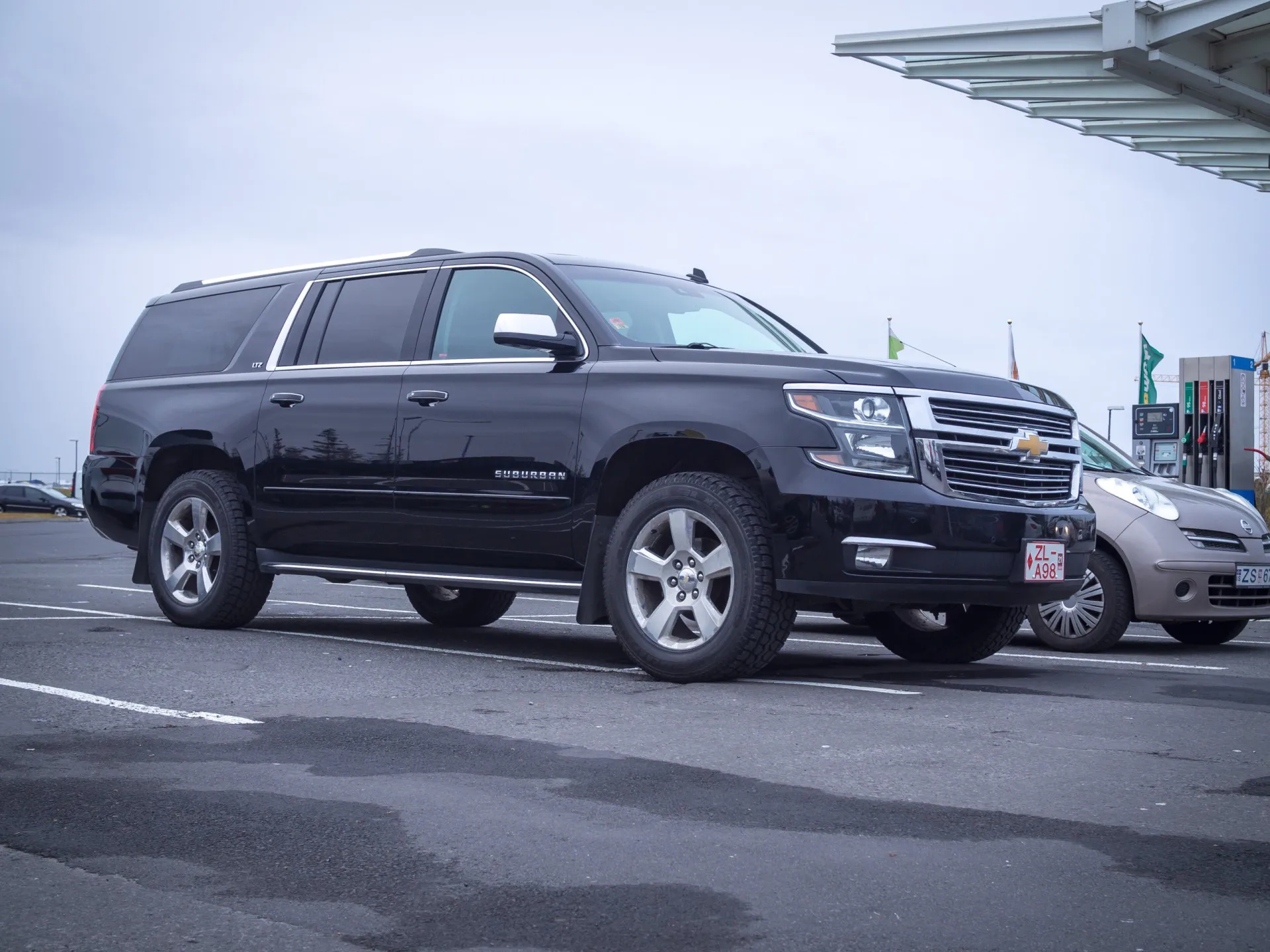
FIXD Reliability Score: 9/10
Owner Reliability Score: 9-10/10
KBB Value: $10,887-$20,813
Fuel Economy: 17-19 mpg (gas), 12.5-13 mpg (E85)
Annual Maintenance/Repair: $938-$1,500
Safety Rating: 4.2-4.6/5
The 2014-2017 Chevrolet Suburban models aren’t perfect, but they are loved by owners and get decent fuel economy numbers.
The FIXD Reliability score on the 2014 Chevrolet Silverado is 9 out of 10 and we don’t currently have enough information for the others. As far as the Owner Reliability Score, the 2014 Suburban gets a 9 out of 10, while the other three have earned a perfect 10 out of 10.
The NHTSA crash test score of the 2014 Chevy Suburban is 4.6 (out of 5), which is above average. The other three models earned a 4.2 (out of 5), which is below average.
The cost of ownership does jump up with these four models. The lowest-cost average ($938) is with the 2016 Suburban, while the highest option ($1,500) is the 2014 model. However, the 2014 model does show fewer instances of expensive repair bills on the engine or transmission.
The 2014 Chevy Suburban most commonly deals with the O2 Sensor Delayed Response (P015B) and (P015D) trouble codes. To fix either of these codes, you may need an oxygen sensor, costing between $153 and $306. We see a similarity in codes with the 2015, 2016, and 2017 Chevy Suburban models. They most commonly deal with the Catalyst System Efficiency Below Threshold (P0420) and the Catalyst System Efficiency Below Threshold – Bank 2 (P0430) codes. Either of these problems may require a new catalytic converter, costing between $1,538 and $2,041.
The 2014 Chevrolet Suburban has three recalls and one investigation, while the 2015 Chevrolet Suburban deals with ten recalls and one investigation. The 2016 Chevrolet Suburban has six recalls and one investigation, but the 2017 Chevrolet Suburban does even better with four recalls.
The Worst Years of the Chevrolet Suburban
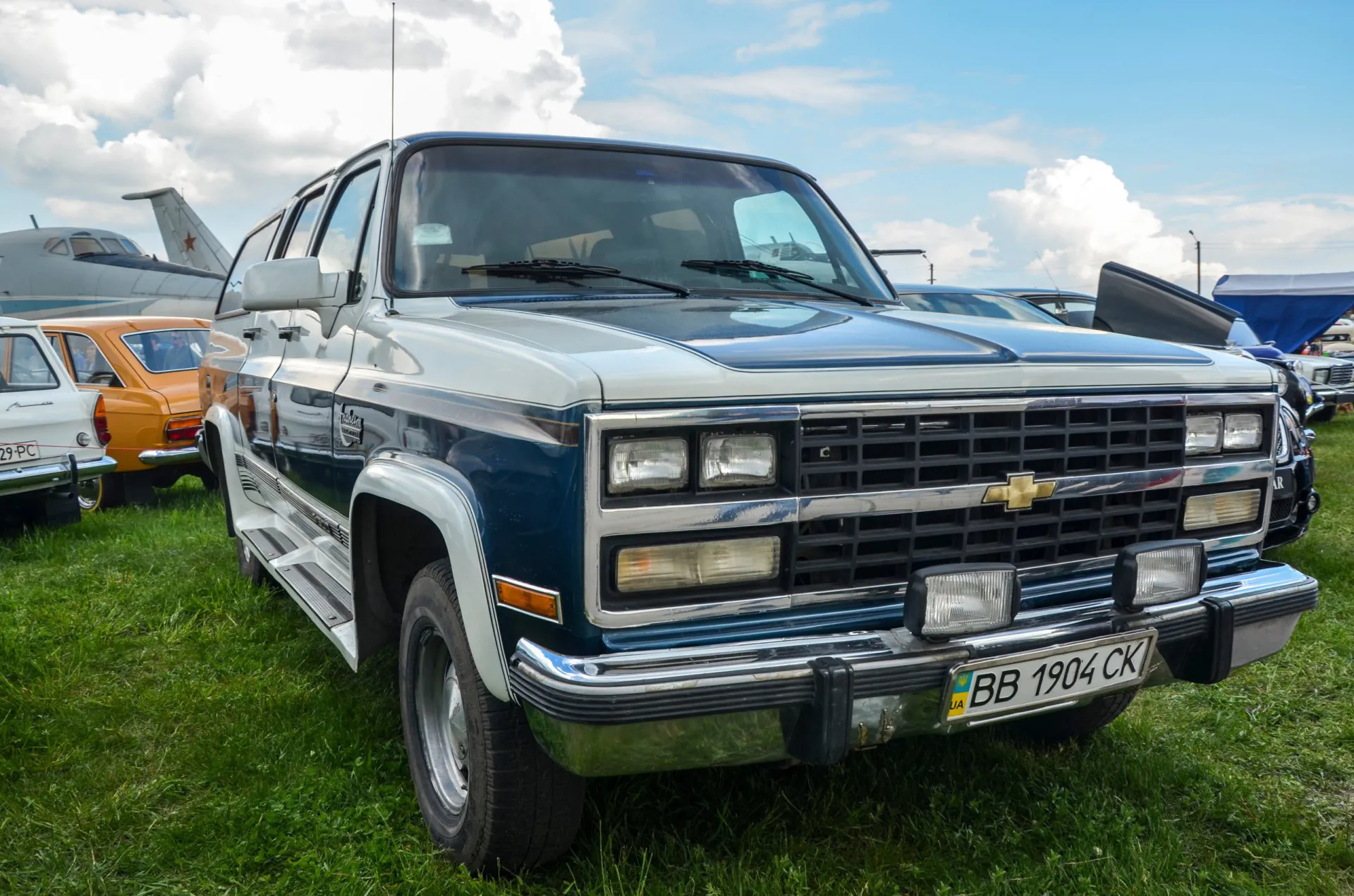
2013 Chevrolet Suburban
FIXD Reliability Score: 9/10
Owner Reliability Score: 9/10
KBB Value: $9,639
Fuel Economy: 17 mpg (gas), 13 mpg (E85)
Annual Maintenance/Repair: $1,100
Safety Rating: 4.6/5
The 2013 Chevrolet Suburban looks good on paper, but there is a higher chance of engine, transmission, and brake repairs.
The FIXD Reliability score on the 2013 Chevrolet Silverado is 9 out of 10. As far as the Owner Reliability Score, the 2013 Suburban gets a 9 out of 10 as well.
The NHTSA crash test score of the 2014 Chevy Suburban is 4.6 (out of 5). This score remains above average, which is a plus for the model.
However, it does have a higher cost of ownership at $1,100 per year. Additionally, there’s an elevated chance of engine, transmission, and brake repairs.
The 2013 Chevy Suburban can show the O2 Sensor Delayed Response (P015B) and (P015D) trouble codes. To fix either of these codes, you may need an oxygen sensor, costing between $153 and $306. Our research also indicates a higher chance of the Engine Oil Pressure Sensor/Switch Range/Performance (P0521) code, which may require a professional for diagnosis.
The 2013 Chevrolet Suburban shows four recalls and one investigation.
2007-2010 Chevrolet Suburban
FIXD Reliability Score: 4-7/10
Owner Reliability Score: 8-9/10
KBB Value: $6,042-$6,444
Fuel Economy: 15-16 mpg (gas), 12 mpg (E85)
Annual Maintenance/Repair: $607-$1,350
Safety Rating: 4.33/5
The 2007 to 2010 Chevy Suburban models see a dip in reliability ratings and also deal with major mechanical issues.
The FIXD Reliability score on the 2007 and 2008 Chevrolet Suburban is 4 out of 10, while the 2009 Suburban earns a 5 out of 10, and the 2010 Chevy Suburban is rated at 7 out of 10. With the Owner Reliability Score, the 2007 Suburban gets 9 out of 10, while the other three models have ratings of 8 out of 10.
The NHTSA crash test score of these is 4.33 (out of 5). All of these models are below average.
Two of the models have a slightly lower cost of ownership, at $607 (2009) and $643 (2007). The other two models are much higher, $1,050 (2008) and $1,350 (2010). Yet, all four models show a high chance of problems with the engine, transmission, AC/heat, or fuel system.
The biggest problem with the 2007 Suburban is the Catalyst System Efficiency Below Threshold (P0420), costing between $1,538 and $2,041 to replace the catalytic converter. The 2008 and 2009 Chevy Suburban both deal with the Random Misfire Detected (P0300) code. You could also notice the 2010 Suburban reveals an Engine Oil Pressure Sensor/Switch Range/Performance (P0521) code. In some cases, an oil pressure-sending unit may fix the problem, leading to a repair cost between $91 and $151.
Both the 2007 Chevrolet Suburban and the 2008 Chevrolet Suburban has four recalls and three investigations. The 2009 Chevrolet Suburban has five recalls and one investigation, while the 2010 Chevrolet Suburban shows four recalls and one investigation.
2003-2004 Chevrolet Suburban
FIXD Reliability Score: 1-4/10
Owner Reliability Score: 7-8/10
KBB Value: $3,841-$4,009
Fuel Economy: 14 mpg (gas), 11 mpg (E85)
Annual Maintenance/Repair: $750-$795
Safety Rating: 3.5/5
These earlier Suburban models may have a deceiving low cost of ownership, but there is a higher chance of engine, transmission, and other system malfunctions.
The FIXD Reliability score on the 2003 Chevrolet Suburban is 1 out of 10, while the 2004 Suburban earns 4 out of 10. With the Owner Reliability Score, the 2003 Suburban gets 8 out of 10, while the 2004 models have ratings of 7 out of 10.
We don’t have the NHTSA crash test score on the 2003 Suburban. Yet, the 2004 Chevy SUV only earns 3.5 (out of 5), another below-average rating.
These models do have a lower cost of ownership at $795 (2003) and $750 (2004). Yet, both have a higher chance of expensive engine and transmission repairs. Beyond that, it looks like the 2003 Suburban may have trouble with the brakes and AC/heat, while the 2004 model sees more fuel system repairs.
The 2003 Chevy Suburban shows a higher instance of the Random Misfire Detected (P0300) code. Additionally, the 2004 Chevy Suburban’s top codes include both the System Too Lean – Bank 1 (P0171) and the System Too Lean – Bank 2 (P0174). With all three of these problems, the Suburban may require a new intake manifold gasket, averaging between $357 and $746.
On the bright side, the 2003 Chevrolet Suburban only has one recall. Sadly, the 2004 Chevrolet Suburban jumps back up to seven recalls and one investigation.
2001-2002 Chevrolet Suburban
FIXD Reliability Score: 1-4/10
Owner Reliability Score: 8/10
KBB Value: $3,560-$3,888
Fuel Economy: 14 mpg (gas), 10 mpg (E85)
Annual Maintenance/Repair: $594-$786
Safety Rating: 3.5/5
These older Suburban models may not be riddled with too many problems, but their lower resale value makes them one malfunction away from being scrap metal.
The FIXD Reliability score on the 2001 Chevrolet Suburban is 1 out of 10, while the 2002 Suburban earns 4 out of 10. As far as the Owner Reliability Score, the 2001 and 2002 Suburban models get 8 out of 10.
The NHTSA crash test rating on the 2001 and 2002 Chevy SUVs is only 3.5 (out of 5). As with most of the rest of the lineup, this score is below average.
The 2002 Suburban averages maintenance and repair costs of $795 annually. The 2001 Suburban does a little better at $594 a year. Yet, both have a higher chance of expensive engine and fuel system repairs. Additionally, the 2001 model sees more repairs with the transmission and brakes.
Both the 2001 and 2002 Chevrolet Suburban show the top DTC as the Knock Sensor 2 Low Circuit Input – Bank 2 (P0332). The second most common fault with both models is the Evaporative Emission Control System Vent Control Circuit Malfunction (P0446) code. It’s the third code that’s different between the two models. For the 2001 Chevy, you may see the Random Misfire Detected (P0300) code, requiring an intake manifold gasket ranging from $357 to $746. The 2002 Suburban deals more with the Evaporative Emission Control System Malfunction (P0440) code. The trouble with any expensive bill is that these Suburbans may not be worth fixing.
More alarming is that the 2001 Chevrolet Suburban has nine recalls and 12 investigations. It’s not much better with the 2002 Chevrolet Suburban, which has five recalls and ten investigations.
FAQs
What years of the Chevrolet Suburban have engine and/or transmission problems?
Based on our data, the 2001-2003, 2007, 2009-2010, 2012-2013, 2015, and 2019 Chevrolet Suburban models are more likely to suffer from expensive engine repairs. There’s also a higher chance of transmission repairs with the 2001, 2003-2005, 2007-2008, 2010, 2012-2013, and 2016-2017 models.
What is considered high mileage for a Chevrolet Suburban?
Chevrolet Suburban models go through a fair share of abuse, just in everyday use by bigger families. It’s difficult to determine how many miles the Suburban can get unless you have the maintenance history and know how it was driven. With proper care, these Chevy SUVs may last 250,000 miles or more.
Based on our data, a high-mileage Chevrolet Suburban could be considered anything over 200,000 miles.
9th generation Suburban models (through 2006) show an average mileage range between 162,500 and 246,000 miles. The 2005 Suburban has one of the highest mileages in our surveys, but many go over 175,000 miles. If you plan to choose a Suburban with high mileage, remember that the resale value drops accordingly.
What other vehicles should I consider?
Chevrolet makes plenty of SUVs that are worth looking at. Consider the Chevrolet Tahoe if you want something on the larger side. Otherwise, there’s the Chevrolet Trax, Chevrolet Trailblazer, Chevrolet Blazer, Chevrolet Equinox, and Chevrolet Traverse to examine. If you want a truck, think about the Chevrolet Colorado, Chevrolet Silverado, or Chevrolet Silverado HD.
There are a few other brands that make large SUVs if you are ready to leave Chevy behind. Consider the Jeep Wagoneer, Ford Expedition, GMC Yukon, Toyota Sequoia, or Nissan Armada.
What owners of the Chevrolet Suburban like to use their car for:
Percent based x/5-star: 0-10% = 1, 11-20% = 2, 21-30% = 3, 31-40% = 4, 41%+ = 5
| Frequent Use Categories: | How Useful? (Out of 5 Stars) |
| Family Vehicle | ***** |
| Lots of Driving (travel/long commute) | *** |
| Hauling/Towing | ** |
| Office on Wheels | * |
| Sport/Fast Driving | * |
| Luxurious Driving | * |
| Outdoor/Off-Road | * |
A Note About Data and Information Sources
This article has many details about Chevrolet Suburban reliability; here’s what we used for our assumptions and recommendations.
- FIXD Reliability Score & Data: Engine reliability information is captured via the FIXD App.
The FIXD Reliability Score is calculated using the number of DTCs per year, weighted by mileage. This is then turned into a scale of 1-10 for easy graphing.
This is an objective score.
- Owner Reliability Score & Data: This data is the result of surveying Chevrolet Suburban owners who use FIXD.
The Owner Reliability Score comes straight from owners of the Chevrolet Suburban.
This is a subjective score.
To determine the Owner Reliability Score we ask each car owner:
How reliable would you say your Chevrolet Suburban is?
a. Just point A to point B driving
b. A Daily Commuter
c. Good for a 100 mile road trip
d. Good for a 500 mile road trip
e. I could take a cross-country road trip, no problem
From here we translate their answers into the Owner Reliability Score:
a. = 2
b. = 4
c. = 6
d. = 8
e. = 10
Keep in mind, owners may think their car is more or less reliable than it actually is.
One potential problem is that people often buy the same make or model they are used to when they go car shopping, just a newer year.
Ford, for instance, has a number of consumer loyalty awards for the Ford F-Series, Ford Mustang, and Ford Expedition.
Car owners may be so loyal to the make or model they currently own that they would have trouble accurately comparing their cars’ reliability to others.
It’s for this reason that we ask car owners a question that is relative to mileage rather than relative to other cars.
Still, be mindful of the accuracy of these Owner Reliability Scores, people’s perceptions and unconscious blindspots can skew data.
We suggest looking at both the FIXD Reliability Score and the Owner Reliability Score for this reason.
- KBB Value: Average private-seller valuations as supplied by Kelley Blue Book (KBB), based on a Chevrolet Suburban with typical mileage for that respective model year.
- Fuel Economy: Mileage-per-gallon estimates according to the EPA MPG on Fueleconomy.gov
- Annual Maintenance/Repair: Upkeep expenses as reported by surveyed Chevrolet Suburban owners
- Safety Rating: Crash test data collected and reported by NHTSA. We average all ratings for each year to come up with a simplified, average safety score. This makes it easier to look at on a graph.
References
- Chevrolet Suburban, wikipedia.org. Retrieved July 12, 2023, from https://en.wikipedia.org/wiki/Chevrolet_Suburban
- Chevrolet Suburban review, edmunds.com. Retrieved July 12, 2023, from https://www.edmunds.com/chevrolet/suburban/

Brian Jones owns a used car dealership outside of Dallas, Texas. He has also worked for decades as an ASE Certified Master Technician for a variety of new car dealerships. Now he spends his time consulting dealerships and writing for some renowned publications, such as Motor1 (https://www.motor1.com/info/team/brian-jones/). When he’s not working, he’s tinkering around with pickup trucks and traveling with his family.

